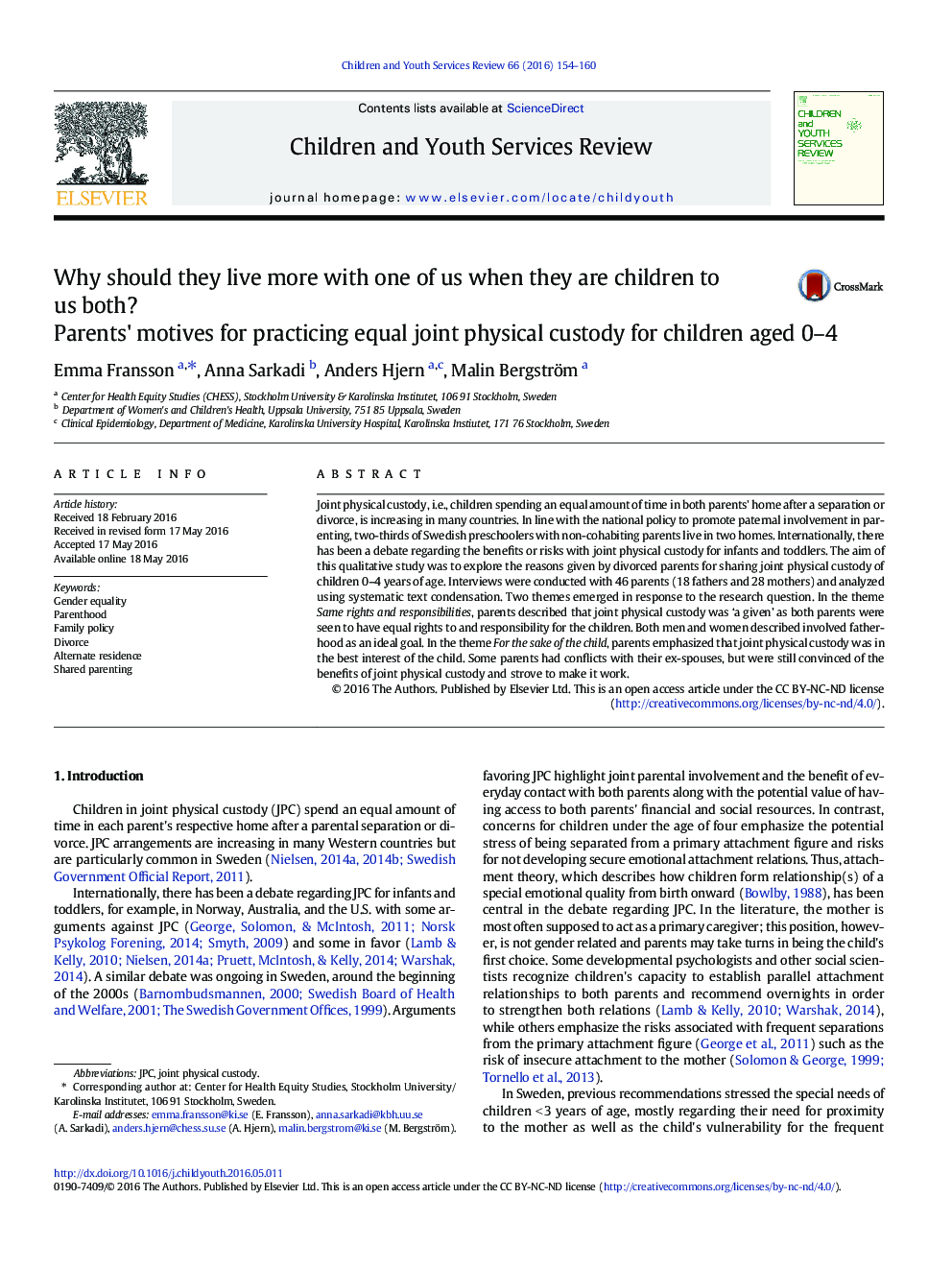| Article ID | Journal | Published Year | Pages | File Type |
|---|---|---|---|---|
| 6833812 | Children and Youth Services Review | 2016 | 7 Pages |
Abstract
Joint physical custody, i.e., children spending an equal amount of time in both parents' home after a separation or divorce, is increasing in many countries. In line with the national policy to promote paternal involvement in parenting, two-thirds of Swedish preschoolers with non-cohabiting parents live in two homes. Internationally, there has been a debate regarding the benefits or risks with joint physical custody for infants and toddlers. The aim of this qualitative study was to explore the reasons given by divorced parents for sharing joint physical custody of children 0-4Â years of age. Interviews were conducted with 46 parents (18 fathers and 28 mothers) and analyzed using systematic text condensation. Two themes emerged in response to the research question. In the theme Same rights and responsibilities, parents described that joint physical custody was 'a given' as both parents were seen to have equal rights to and responsibility for the children. Both men and women described involved fatherhood as an ideal goal. In the theme For the sake of the child, parents emphasized that joint physical custody was in the best interest of the child. Some parents had conflicts with their ex-spouses, but were still convinced of the benefits of joint physical custody and strove to make it work.
Related Topics
Health Sciences
Medicine and Dentistry
Perinatology, Pediatrics and Child Health
Authors
Emma Fransson, Anna Sarkadi, Anders Hjern, Malin Bergström,
